Jesus Christ was one of the world’s most important religious leaders. The Christian religion was founded on his life and teachings. Most Christians believe that Jesus is the son of God who was sent to Earth to save humanity. Even many people who are not Christians view him as a great and wise teacher. Jesus was certainly one of the most influential people who ever lived.
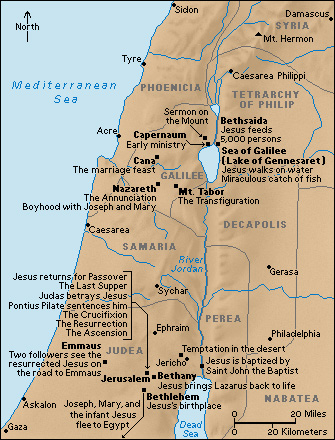
The personal name of Jesus Christ was Jesus. The term Christ is a title that was so closely associated with Jesus that it became part of his name. It comes from the Greek word christos. The word is a translation of the Hebrew word messiah (anointed one). The Messiah was the savior God promised to send to the people of Israel. The name “Jesus Christ” means “Jesus the Messiah.”
Christians make up the largest religious group in the world. The Qur’an, the sacred scripture of Islam, presents Jesus as a great prophet. Some Jewish scholars see Jesus as a notable representative of the Judaism of his day.
Sources of information about Jesus
The New Testament Gospels.
Among the earliest sources of information about Jesus are four books of the New Testament, the Gospels of Matthew, Mark, Luke, and John. The word gospel means good news. Christian tradition attributes the Gospels of Matthew and John to men who followed Jesus during his lifetime. The other two Gospels are attributed to men who became followers of Jesus after his death. Today, most scholars doubt that any of the Gospel writers knew Jesus during his lifetime. They also doubt that we know the actual names of the writers. However, most scholars think these Gospels were written between A.D. 70 and 110, about 40 to 80 years after the death of Jesus.
The Gospels of Matthew and Luke begin by describing the birth and early life of Jesus. All four of the New Testament Gospels describe the public life of Jesus in some detail, ending with his final sufferings, called his Passion; his death; and his Resurrection. The author of the Gospel of Luke added a second volume to his story of Jesus, called the Acts of the Apostles, which tells the story of the early Christian church up to about A.D. 62.
Other gospels.
Other early Christian writings about Jesus’s life and teachings, also called gospels, are not included in the New Testament. The most important of these writings is the Gospel of Thomas, a collection of 114 sayings of Jesus. It is written in the Coptic language and was discovered at Nag Hammadi, Egypt, in 1945. Another is the Gospel of Peter. The portion of this gospel that describes Jesus’s death and Resurrection was discovered in Egypt in 1886. The Infancy Gospel of James describes the birth of Jesus, and the Infancy Gospel of Thomas describes his childhood.
Fragments of other gospels survive in quotations by writers known as the Church Fathers. These are the Gospels of the Nazarenes, Ebionites, and Hebrews. There are also fragments of a Secret Gospel of Mark in a letter of the Church Father Clement of Alexandria that was discovered in 1958.
Scholars dispute the value of the information in these non-Biblical gospels. Many experts think these writings depend on the New Testament and do not provide additional reliable information. Others think they are reliable. The dates of these writings are also disputed.
Other writings.
Other New Testament writings, especially the epistles (letters) of Paul, include some information about Jesus and tell us about the early followers of Jesus after his death. The epistles were written from about A.D. 50 to 62, making them the earliest writings about Jesus that we possess. Many other Christian writings provide information about Jesus that some scholars consider valuable. Non-Christian references to Jesus and the times in which he lived are found in the writings of the Jewish historian Flavius Josephus, who wrote about A.D. 90, and the Roman historian Cornelius Tacitus, who wrote about A.D. 115.
The historical Jesus
The attempt to discover the historical facts about Jesus in a disciplined way began about 1780. Since then, the effort has been revived several times, most recently in the last half of the 1900’s. The attempt has not entirely succeeded for several reasons.
First, the sources of information about Jesus are not primarily intended to provide historical facts. These sources are expressions of faith in Jesus. They contain factual information, but as part of an attempt to persuade people to believe in Jesus, not simply to communicate facts. Thus, it is difficult to separate the factual information from other aspects of these writings.
Second, scholars differ about the relative value of the available sources. There is general agreement that the Gospels of Matthew, Mark, and Luke are among the best sources of historical information about Jesus. However, many scholars do not consider the Gospel of John an equally good source. There is even more disagreement about the sources that are not included in the New Testament. Some scholars think the Gospel of Thomas is a valuable source. Others do not. Reconstructions of the historical Jesus differ when they are based on different sources.
Third, sources of information do not always agree. The sources differ in what they tell us about Jesus. Some information is found only in one source, or in a few sources but not in all of them. The sources also differ in the arrangement of information. Often the order of events in one source is not the same as in others. The sources also differ in their general presentation of Jesus. All these disagreements make it difficult to identify the facts about Jesus.
Fourth, scholars disagree about what aspects of the world in which Jesus lived are the most important for understanding him. Most experts agree that Jesus needs to be understood as part of the Judaism of his time. Some argue that Jesus should be seen as a member of the Cynic school, an ancient Greek school of philosophy that valued virtue over pleasure (see Cynic philosophy ). Others claim that Jesus was primarily a social and political activist.
The following description of Jesus’s life is not a rigorous critical reconstruction of the historical Jesus. Instead, it compiles the information provided by the sources, particularly the New Testament Gospels.
Early life
The Nativity
is a term often used to mean the birth of Jesus. According to the New Testament Gospels of Matthew and Luke, Jesus was born during the lifetime of Herod the Great, who ruled Palestine. Herod died in 4 B.C., so Jesus must have been born in that year at the latest. Nobody knows what time of year Jesus was born. The day of his birth was first celebrated on December 25 in the early 300’s.
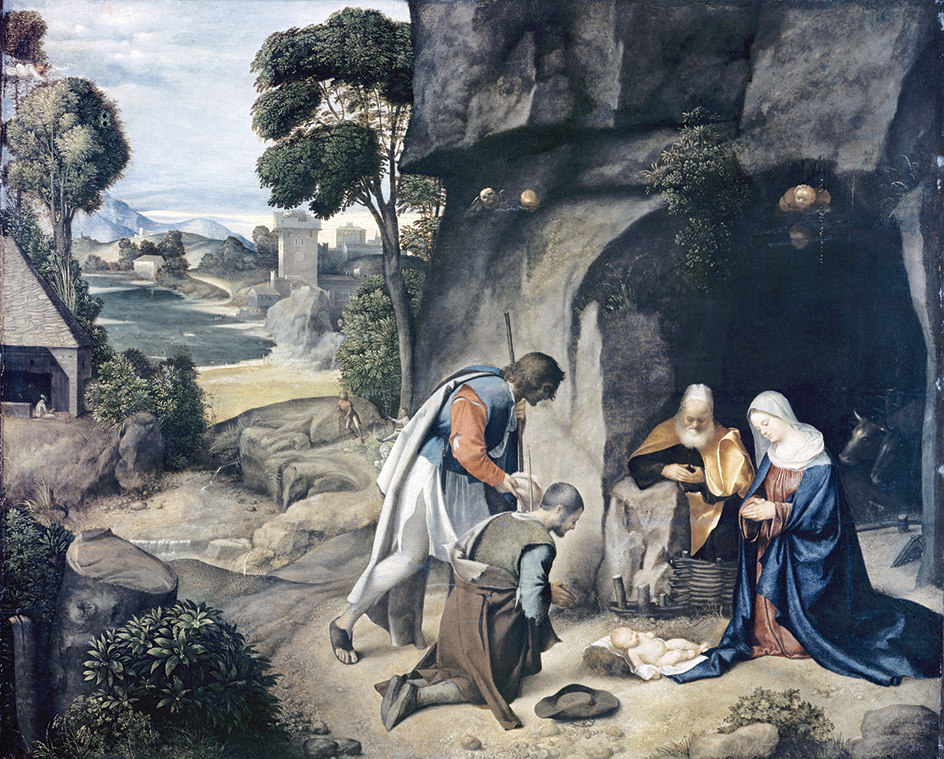
The New Testament Gospels of Matthew and Luke and the Infancy Gospel of James tell of the people, places, and events connected with the birth of Jesus. All three documents record that he was born in the town of Bethlehem, in the territory of Judea. His mother was the Virgin Mary. Mary’s husband was Joseph. Matthew and Luke also record that Jesus was raised in Nazareth, a town in the region of Galilee. In other details, the three accounts differ greatly.
According to Matthew, Mary and Joseph lived in Bethlehem. When Joseph discovered that Mary was pregnant, an angel appeared to him in a dream. The angel told him that the child was of the Holy Spirit. Magi (wise men) traveled from the east to see the newborn Messiah. The magi first asked for Jesus in Herod’s court in Jerusalem. Then they followed the light of a star to Bethlehem. They found Jesus and gave him gifts of gold, frankincense, and myrrh. They had been warned not to return to Herod, so they took a different route home. Herod became angry. He ordered the deaths of all boys in Bethlehem 2 years old or younger. An angel had appeared to Joseph in another dream and warned him about Herod’s decree. Joseph fled with Mary and Jesus to Egypt. After Herod died, they returned and settled in the town of Nazareth. Stories describing the first appearance of the angel to Joseph, the visit of the magi, and Herod’s killing of the young boys also appear in the Infancy Gospel of James.
According to Luke, Mary and Joseph originally lived in Nazareth. The angel Gabriel visited Mary and announced that her child would be the Son of God and the Messiah that was promised in the Hebrew Bible. This visit is known as the Annunciation. Some time before Jesus was born, Mary and Joseph went to Bethlehem to record their names in a census. They found shelter in a stable. Jesus was born there, and Mary made a cradle for him in a manger. Shepherds near Bethlehem saw angels in the sky. After Mary and Joseph had done everything commanded by Jewish law, they returned with Jesus to Nazareth. The Infancy Gospel of James also includes the stories of the Annunciation and the census.
Childhood.
There is only one story in the New Testament about Jesus’s childhood. Luke says that when Jesus was 12 years old, he went with Mary and Joseph to Jerusalem for the feast of Passover. He sat among the scholars in the Temple and amazed them with his wisdom. Luke ends this story by saying that “Jesus increased in wisdom and in years, and in divine and human favor” (Luke 2:52). Jesus grew up in Nazareth and probably helped Joseph in his carpentry work. Both of them may have worked in the nearby town of Sepphoris.

The Infancy Gospel of Thomas tells a number of stories about Jesus between the ages of 5 and 12. Most involve miracles worked by Jesus. The last of these stories is the one from the Gospel of Luke summarized above. Few scholars think the stories unique to the Infancy Gospel of Thomas are likely to be historical.
Public life
Baptism.
All four New Testament Gospels agree that Jesus’s public life began after the appearance of John the Baptist in Judea. John preached repentance and baptized those who accepted his message with water from the Jordan River. The Gospels of Matthew and Mark describe John’s baptism of Jesus, as do fragments of the Gospels of the Ebionites and Hebrews. The Gospel of Luke refers to Jesus’s baptism without describing it, and the Gospel of John seems to imply it. According to Luke, Jesus was baptized when he was about 30 years old.
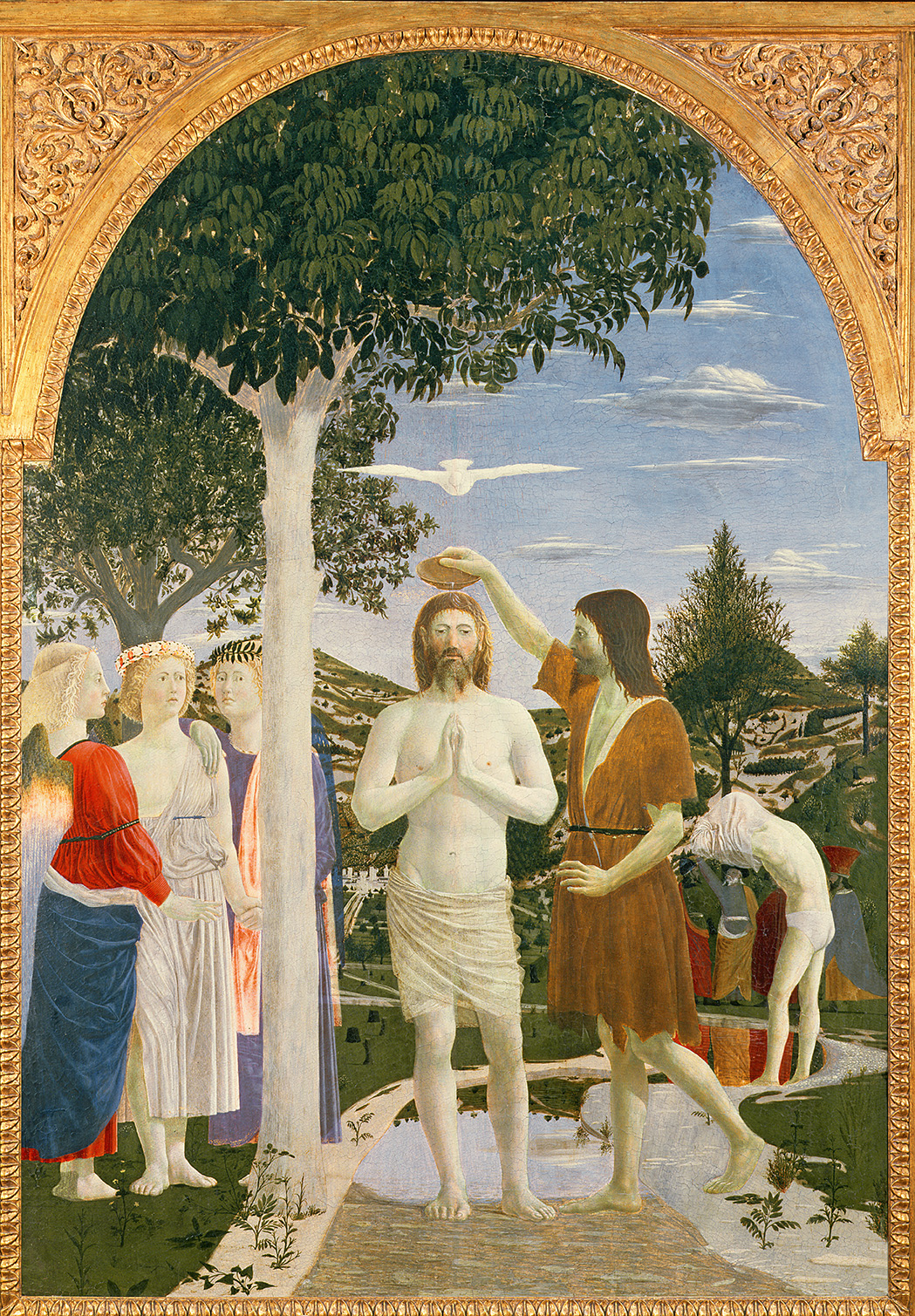
Ministry.
The mission of Jesus was to announce that the Kingdom of God was coming, and that it had begun to arrive even as he announced it. He accomplished his mission both by words and by actions, through his miracles and his teaching. By the Kingdom of God, Jesus meant a new state of affairs on Earth, which God would bring about. God would intervene in human history to eliminate every kind of evil. As a result, human beings would live in peace and justice forever.
After Jesus’s Baptism, he went to Galilee to begin to spread his message. According to Matthew, Mark, and Luke, Jesus carried out the first part of his ministry in Galilee and the area around it. He chose Capernaum, near the Sea of Galilee (Lake Gennesaret) as his headquarters. At the end of his ministry in Galilee, Jesus traveled to Jerusalem, where he was arrested, tried, and crucified. According to John, however, Jesus traveled between Galilee and Judea several times during his ministry.
Followers.
In the course of his ministry, Jesus attracted large crowds who came to see and hear him wherever he went. Jesus also called some people to be his disciples (students) and to follow him as he traveled. From his disciples, Jesus chose a special group of 12 to assist him. They symbolized the reassembly of the 12 tribes of Israel at the end of time. Later, the 12 were referred to as the apostles (messengers). Apostle was also the name for a larger group of people who carried on the mission of Jesus after his death. The best known member of this group was the apostle Paul.
The miracles.
The New Testament Gospels describe many miracles that Jesus performed. In each miracle, the Kingdom of God entered into human life in a small way. The miracles brought relief from many kinds of sickness and suffering. This relief showed the meaning of the Kingdom of God.
Jesus worked four kinds of miracles. They were (1) exorcisms (casting out demons), (2) healings, (3) raising the dead, and (4) what are often called nature miracles. An exorcism story found in the Gospels of Matthew, Mark, and Luke tells how Jesus cast an unclean spirit out of a boy with a condition resembling epilepsy. Jesus’s healing miracles were responses to physical ailments, such as paralysis, blindness, and leprosy. The Gospels of Matthew, Mark, and Luke describe how Jesus healed a paralyzed man.
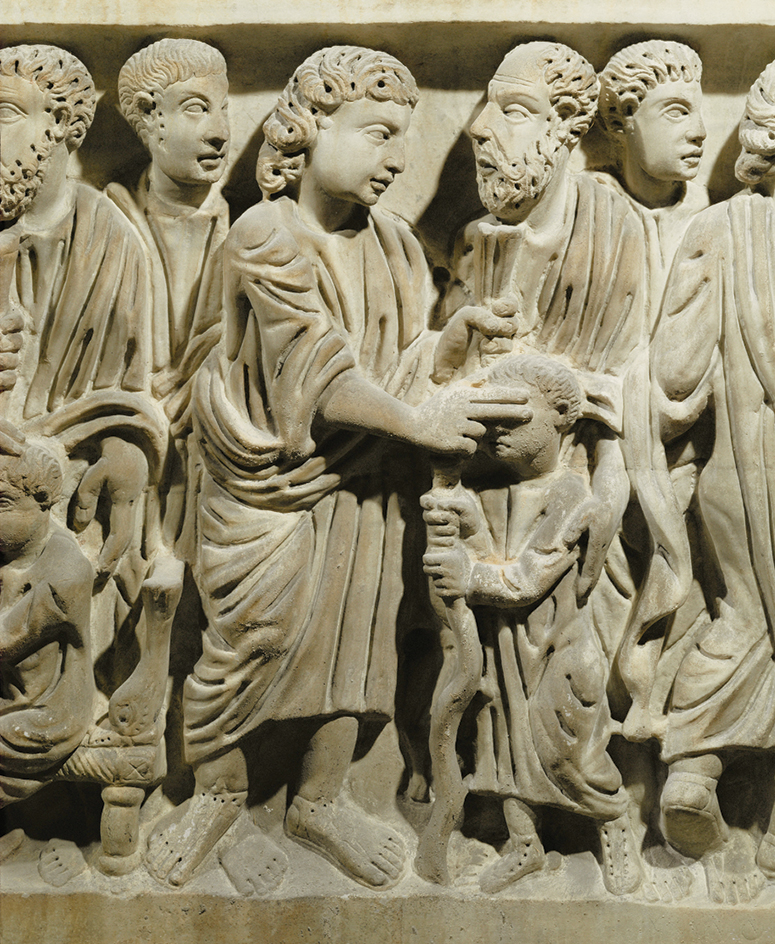
The New Testament Gospels include three distinct stories about Jesus’s restoring a dead person to life. One of them, found in Matthew, Mark, and Luke, tells how Jesus raised from the dead the 12 year-old daughter of a synagogue leader named Jairus. Jesus’s nature miracles are stories about his extraordinary power over the natural world. One nature miracle is found in all four New Testament Gospels. Jesus divided five loaves of bread and two fishes among 5,000 people so that everyone would have food.
His teaching.
In addition to proclaiming the Kingdom of God by his miracles, Jesus also proclaimed it by his teaching. Jesus often used parables to explain the Kingdom of God. Jesus’s parables are brief stories that teach lessons. Parables are widely considered to be a characteristic form of teaching used by the historical Jesus.
One parable found in the Gospels of Matthew, Mark, and Luke as well as the Gospel of Thomas is the parable of “the Mustard Seed.” Jesus compared the Kingdom of God to a mustard seed. It is the smallest of all seeds but grows into a large plant in which birds can nest. The same four Gospels also include the parable of “the Sower.” A farmer sowed seed that fell on different kinds of ground. Much of the seed was lost, but the seed that fell on good soil produced abundantly.
One of Jesus’s best-known parables, “the Prodigal Son,” is found in Luke 15:11-32. It describes a father’s great joy at the return of his wayward son. Jesus used this story to teach God’s love and forgiveness for sinners who repent.
Not all of Jesus’s teaching was in parables. One of the most striking examples of another kind of teaching is the Sermon on the Mount, found in Matthew 5-7. In this sermon, Jesus challenged his disciples not to fight back if they were attacked. He commanded, “ If anyone strikes you on the right cheek, turn to him the other also” (Matthew 5:39). Jesus also encouraged his followers to trust that God would care for them as God cares for the birds of the air and the flowers of the field. He taught people to love God and their neighbors. Jesus stressed that each person should treat others as he or she wished to be treated. This principle is often called the golden rule. The Sermon on the Mount contains sayings called the Beatitudes, which describe certain virtues, as well as the Lord’s Prayer, the most widely used Christian prayer.
The Passion
The Passion is a term used to indicate Jesus’s suffering during the final days of his life. Christians remember these final days during Holy Week. Detailed information about the end of Jesus’s life is found in the four New Testament Gospels and in the Gospel of Peter.
Jesus’s proclamation of the Kingdom of God was good news for his followers. But some, especially the leaders of the Jewish community, disliked his teaching. They believed that Jesus had changed some accepted religious practices, such as the Sabbath laws. Most of all, the leaders feared that his popularity would encourage a rebellion against the Roman Empire, which would cause the Romans to destroy the Jewish nation.
Jesus probably knew that it was dangerous to carry out his ministry. But he considered his ministry to be his duty. He was determined to preach the good news of the Kingdom of God. Jesus felt that he had come to save other people by giving his own life.
Entry into Jerusalem.
Jesus arrived in Jerusalem for the week of the Jewish festival of Passover. He made a triumphal entry into the city. People cheered him and covered his path with clothing and the branches of palm trees. They were grateful for his teaching and healing. Many of them believed that he would bring a better life to the Jewish nation. Jesus went into the Temple and drove out the men who were changing money and selling doves. He taught that the house of God must be for prayer, not for making money. During the next few days, Jesus spent part of his time teaching in Jerusalem. The rest of the time he spent in the nearby town of Bethany.
The Last Supper.
Jesus had a final meal with his disciples in Jerusalem. This meal is often called the Last Supper. During the meal, Jesus told his disciples that one of them would betray him. According to Matthew, Mark, and Luke, the supper was the Passover meal. As Jesus gave his disciples bread, he said “This is my body.” As he gave them wine, he said “This is my blood.” The apostle Paul also says that on the night before he died, Jesus gave his disciples bread and wine as his body and blood (1 Corinthians 11:23-25). The ceremony of Communion is based on the Last Supper.
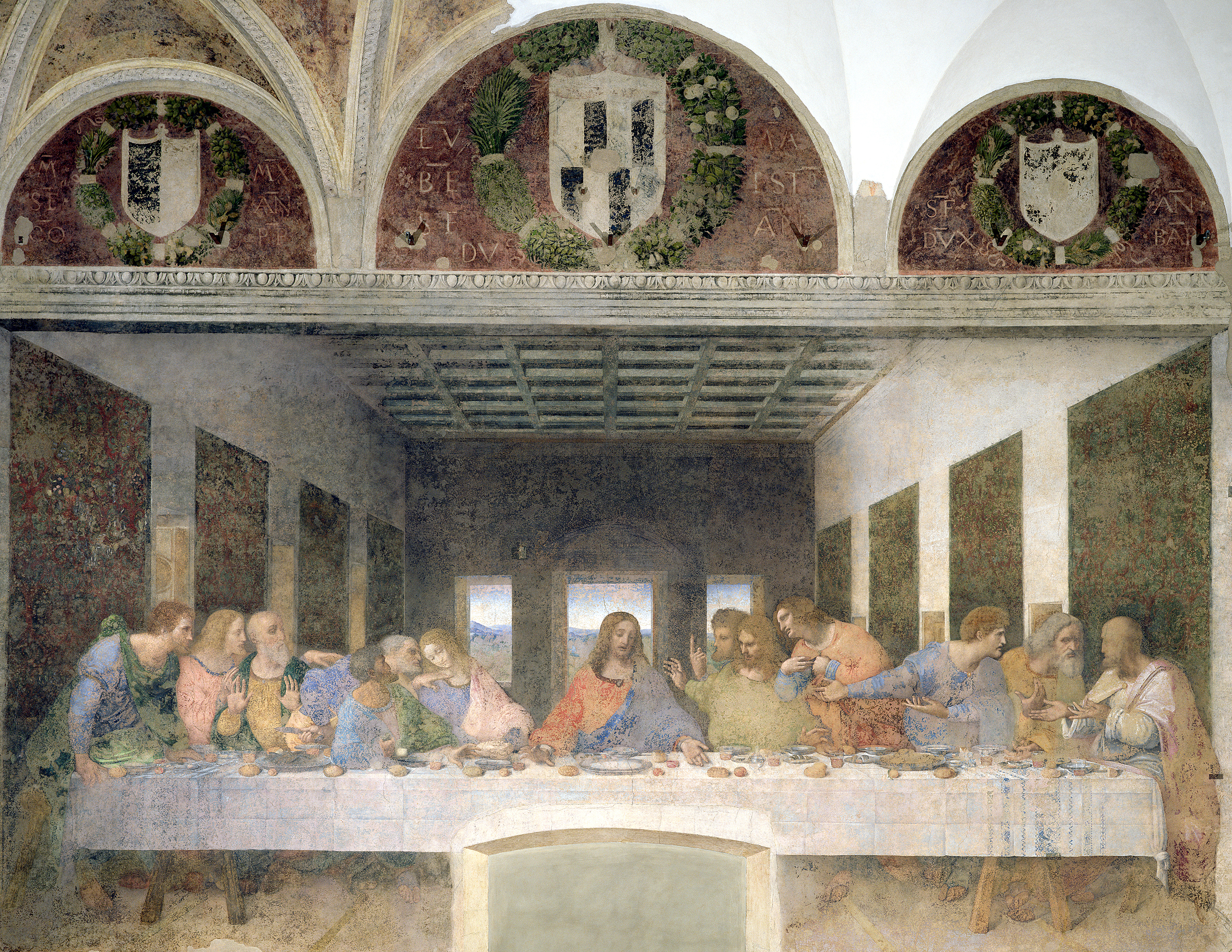
The trial.
After the meal, Jesus and his disciples went to Gethsemane, a garden on the slope of the Mount of Olives, opposite the Temple. According to Matthew, Mark, and Luke, Jesus prayed there in agony, knowing what was about to happen to him, but he submitted himself to God’s will. A band of armed men came to the garden to arrest Jesus. Judas Iscariot, one of the 12, pointed him out to them. Thus, Judas was the one who betrayed Jesus. The Gospel of Matthew says that Judas later hanged himself.
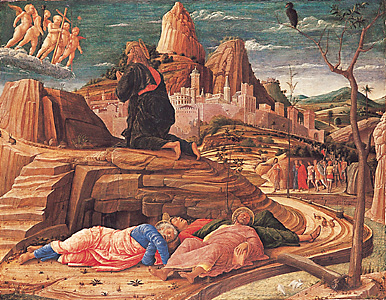
The armed men took Jesus to the high priest’s house. There the leaders of the people questioned him. According to Matthew, Mark, and Luke, they asked him if he was the Messiah. When he did not deny it, they said that he had blasphemed (insulted God’s name).
The Jewish leaders took Jesus before Pontius Pilate, the Roman governor of Judea. They said that Jesus claimed to be King of the Jews and charged him with treason against Rome. According to Luke, Pilate found out that Jesus was a Galilean and sent him to Herod Antipas, the ruler of Galilee. Herod mocked Jesus and sent him back to Pilate.

It was the custom of the Roman governor to release one Jewish prisoner at the Passover season. Pilate took Jesus and a condemned prisoner named Barabbas onto the steps of his headquarters and told the crowd to choose which one should go free. The crowd turned against Jesus and chose Barabbas. Pilate then sentenced Jesus to die on the cross. Crucifixion was a common Roman form of execution.
The Crucifixion.
According to the New Testament Gospels of Matthew, Mark, and John and the Gospel of Peter, the Roman soldiers mocked Jesus for claiming to be King of the Jews. They dressed him in a robe, and placed a crown of thorns on his head. Some of the men struck him. The Gospel of John says that Jesus carried his own cross to the place of the Crucifixion. According to the other New Testament Gospels, the soldiers made a man named Simon of Cyrene carry the cross. The soldiers nailed Jesus to the cross outside the city, on a hill called Golgotha (Calvary). On the cross, they wrote the charge against Jesus, “The King of the Jews.” They set up his cross between the crosses of two thieves.
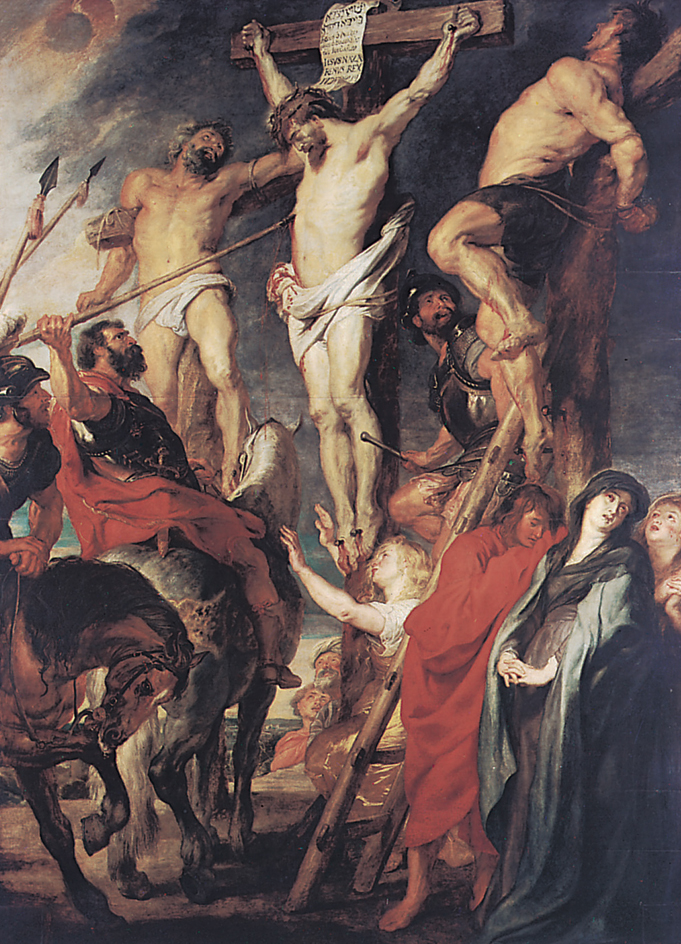
According to Luke, Jesus said as he hung on the cross, “Father, forgive them; for they know not what they do” (Luke 23:34) and later, “Father, into your hands I commit my spirit” (Luke 23:46). According to both Matthew and Mark, he cried out “My God, My God, why have you forsaken me?” (Matthew 27:46; Mark 15:34). After Jesus died, a disciple named Joseph of Arimathea took his body to a new tomb and sealed that tomb with a stone.
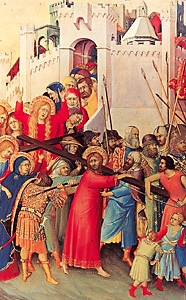
The Resurrection.
Christians believe Jesus returned to life, which they call his Resurrection, and celebrate it on Easter Sunday. The New Testament Gospels and the Gospel of Peter tell how Mary Magdalene went to Jesus’s tomb on Sunday morning. She found the stone rolled away and the tomb empty.
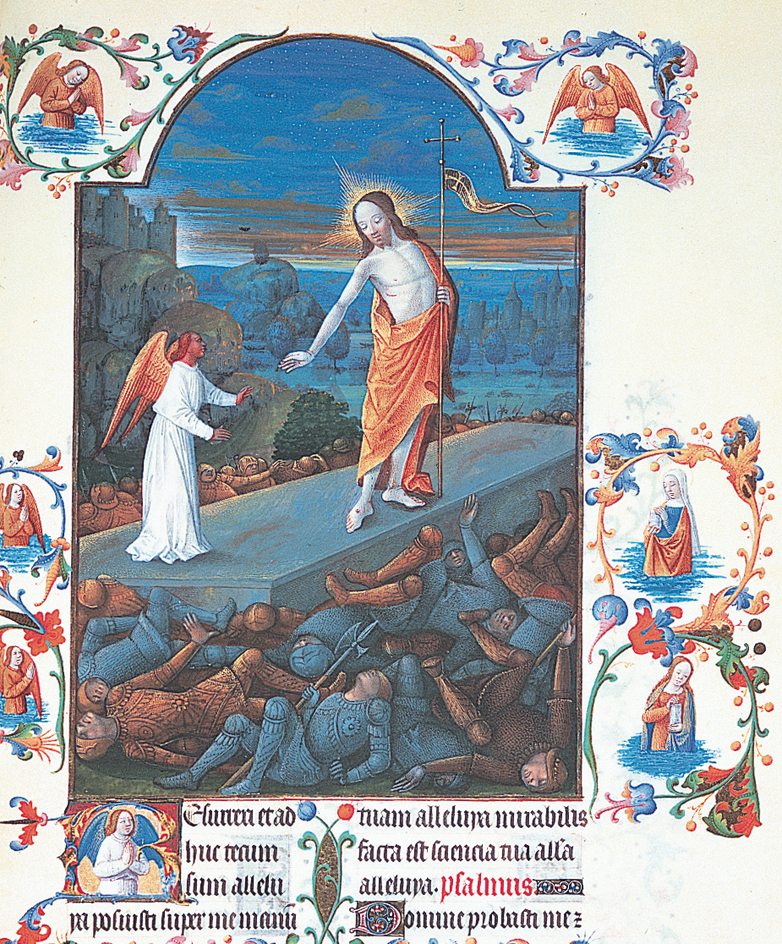
The New Testament Gospels record various appearances of Jesus after the discovery of the empty tomb. He appeared to Mary Magdalene (Matthew, Mark, and John), to Simon Peter and to two disciples who saw Jesus on the road to Emmaus (Luke). He also appeared to the faithful disciples who met Jesus in Jerusalem (Luke, John) and in Galilee (Matthew, John). The apostle Paul listed many appearances of Jesus after his Resurrection, ending with Jesus’s appearance to Paul himself (I Corinthians 15:4-8).
According to the Acts of the Apostles, Jesus stayed on Earth during the next 40 days and taught his disciples. Then he rose into heaven. This rising into heaven is called the Ascension.
The early Christians
Jesus’s Resurrection convinced his disciples that he was not only the one who announced the coming of the Kingdom of God, but also was the Messiah, who would bring the Kingdom into being. They believed that through his death and Resurrection, Jesus had begun to free humanity from all suffering and evil. The disciples also believed that he would soon come again to complete the work he had begun.
Within a relatively short period of time, the disciples converted thousands of people to the new faith. The missionary activity of the apostle Paul helped to spread Christianity throughout the eastern Mediterranean area within 30 years after Jesus’s death. The spread of Christianity confronted the early Christians with the question of how Gentiles should be incorporated into the Christian church. Jesus himself had not clearly answered this question, probably because he interacted mainly with other Jews. When the early Christians converted Gentiles in large numbers, it became necessary to decide whether they needed to keep the Jewish law. The early Christians first disagreed about the answer. Finally, they decided that Gentiles could be members of the Christian church without keeping the Jewish law.
The early Christians also tried to understand Jesus more fully. They came to see that he was not only the Messiah, but also the son of God in a special sense not shared by anyone else. Eventually, they explained Jesus’s relationship to God by means of the doctrine of the Trinity. This doctrine states that in one God there are three divine persons—the Father, the Son, and the Holy Spirit. According to this doctrine, Jesus, the Father, and the Holy Spirit are three persons who have one divine nature. Thus, the doctrine of the Trinity explained why Jesus had absolute authority for his teachings and absolute power to forgive sins and give eternal life.
During the A.D. 100’s and 200’s, the Christians suffered intermittent persecution by the Roman authorities, but the faith continued to spread. Finally, in 313, the Emperor Constantine the Great gave Christians freedom of worship by his Edict of Milan.
